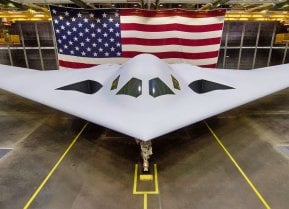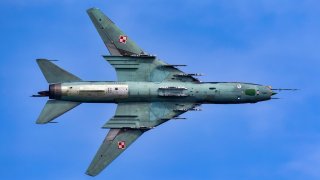Su-17/Su-22 Fitter: It Just Might Be Russia's Worst Warplane Ever
The Su-17 or Su-22 variants saw combat in a variety of conflicts, including the Iran-Iraq War, and the Persian Gulf (Operation Desert Storm).
The Cambridge Dictionary defines the noun “fitter” as “someone whose job is to repair or put together equipment or machines” and cites “an engine fitter” as an example. Well, in the case of the Sukhoi Su-17/Su-22 “Fitter,” it’s a war machine, i.e. a jet-powered fighter-bomber, that’s meant to destroy adversaries’ war machines rather than repair them.
Su-17/22 Origins and Specifications
The Fitter made her maiden flight on 2 August 1966 and officially entered into operational service with the Soviet Air Forces (Военно-Воздушные Силы Союза Советских Социалистических Республик/Voenno-Vozdushnye Sily Soyuza Sovetskih Sotsialisticheskih Respublik [VVS SSSR]) in 1970, thus becoming the first variable-sweep wing aircraft to enter Soviet service.
A total of 2,867 airframes were built between 1969 and 1990, and the roughly 30 or so foreign customers of the plane included Iraq, Libya, Syria, Poland, and Peru, with the export variant being dubbed the Su-22. According to the Aerospaceweb.org info page:
“The Su-17 attack plane was a development of the Su-7, a rugged swept-wing attack fighter dating back to 1955. To improve the range and performance of the Su-7, Sukhoi modified the aircraft with pivoting swing-wings to produce the Su-17.
Western sources originally believed the Su-17 was nothing more than an experimental aircraft with a crude attempt to test variable geometry wing technology…However, the modified design proved so successful that the Soviet Union proceeded with a production model known as the Su-17M 'Fitter-C'. This model also featured a new more powerful and fuel efficient engine as well as an improved navigation and attack system.”
The Fitter sported a fuselage length of 62.42 feet, an unswept wingspan of 45.25 feet (32.83 feet swept), a height of 16.83 feet, an empty weight of 23,455 pounds, and a maximum takeoff weight of 42,900 pounds. Max airspeed was Mach 1.77 (1,347 mph), and service ceiling was 49,870 feet.
Armament consisted of two 30mm NR-30 cannon and eight to ten external hardpoints; the hardpoints could be configured with either air-to-air missiles such as the K-13/AA-2 Atoll, R-60/AA-8 Aphid, or air-to-ground missiles such as the Kh-25ML/AS-10 Karen, Kh-58E/AS-11 Kilter, Kh-25MP/AS-12 Kegler, Kh-29/AS-14 Kedge.
Real-World Performance from Libya to Iraq: Fit to Fight?
The Fitter variants saw combat in a variety of conflicts, including the Iran-Iraq War, the Persian Gulf (Operation Desert Storm), the Chadian-Libyan conflict, and the Libyan Civil War.
My research indicates that these warbirds acquitted themselves quite well in the bombing role, but not so much in the air-to-air combat role, as the only aerial kill scored by a Fitter pilot that I’ve come across was one scored by an Iraqi Air Force Fitter driver against an Iranian F-4E Phantom on 20 October 1980.
Indeed, the Su-17s and -22s were easy prey for Iranian and American fighter pilots alike. For example, during the Gulf of Sidra incident on 19 August 1981, two Libyan Su-22s were shot down by U.S. Navy F-14 Tomcats.
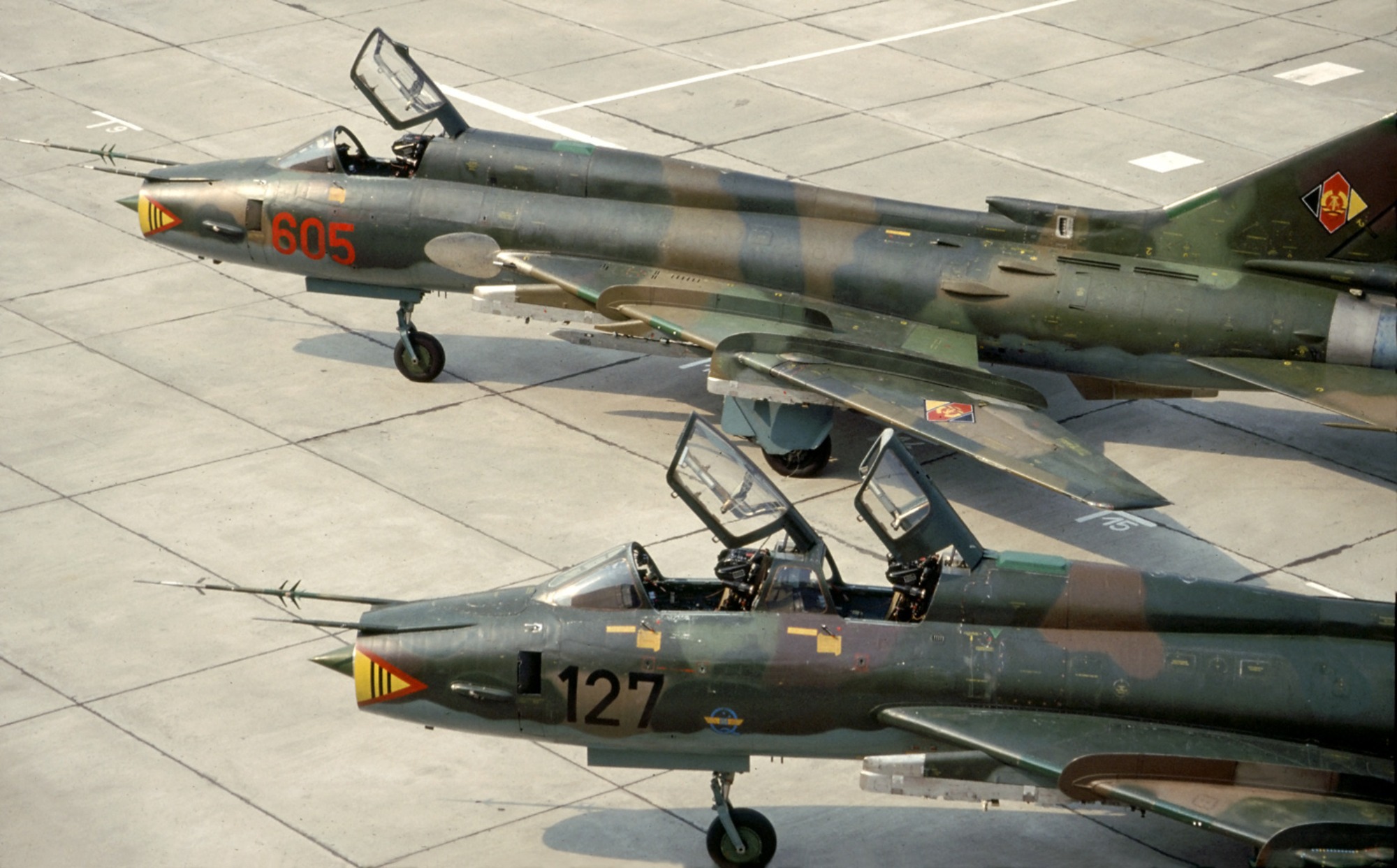
Fast-forward to the Gulf War, specifically on 7 February 1991, and two Su-22s and a Su-7 were downed by U.S. Air Force F-15 Eagles using AIM-7 Sparrow missiles, and the following month, during Operation Provide Comfort, two more Su-22s were killed by USAF Eagle pilots.
Most recently, on 18 June 2017, a USN F/A-18E Super Hornet shot down a Syrian Su-22 after the Fitter dropped munitions near U.S.-backed Syrian Democratic Forces fighters.
Where Are They Now?
Reports indicate that Angola, Libya, Iran, and Poland still have Su-22s in service.
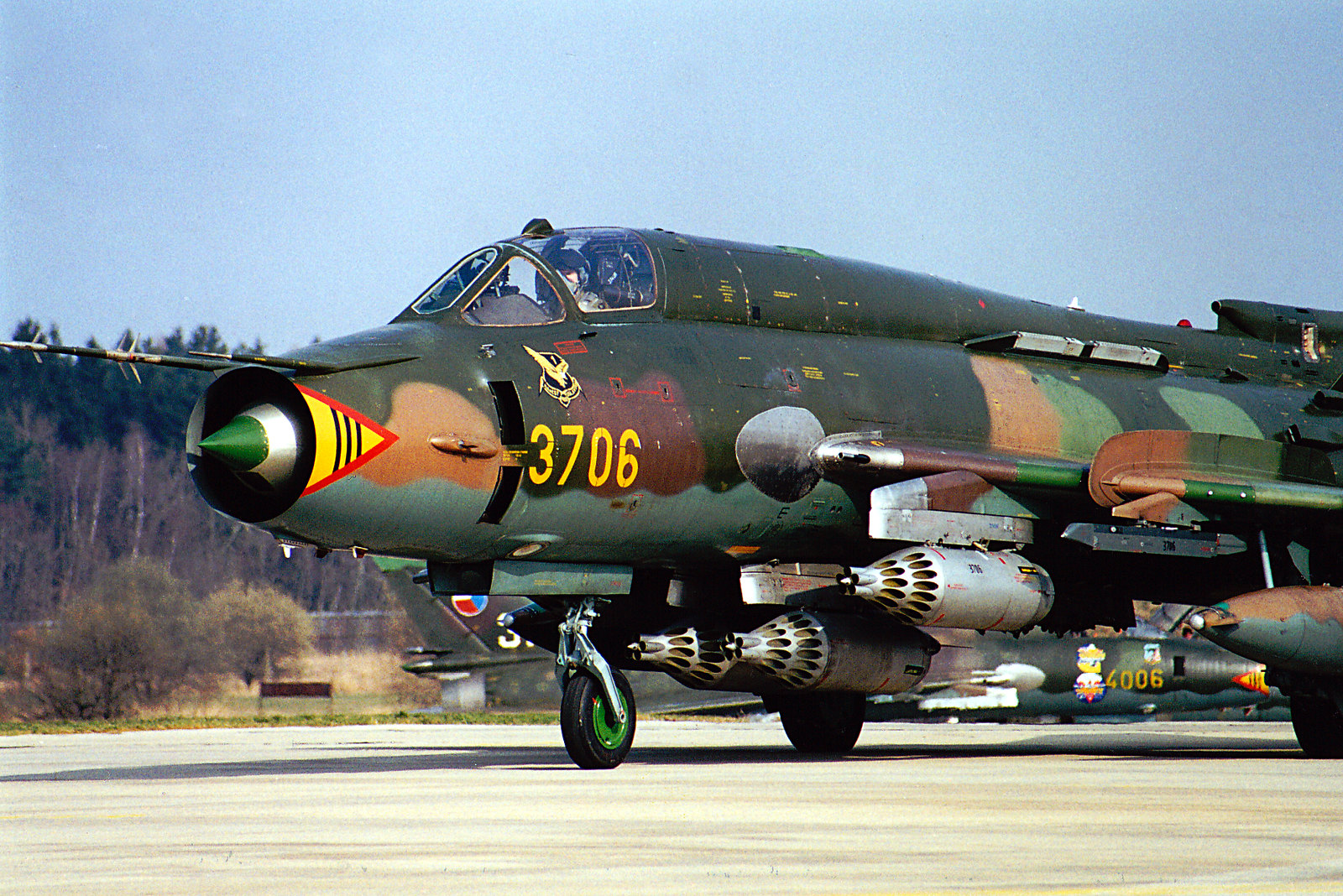
As far as I can ascertain (and please correct me if I’ve missed anything, dear readers), the only example of a surviving Fitter at a Stateside museum is the Su-22M4 that’s listed as “currently in storage” at the National Museum of the United States Air Force at Wright-Patterson AFB near Dayton, Ohio; the plane arrived at the museum back in 2003 courtesy of the Federal Republic of Germany.
As far as NATO allies’ museums go, the Museo Avazione (literally, “Aviation Museum”) in Rimini, Italy hosts a Sukhoi Su-17 UM4 “Fitter-K” with this backstory: “The example seen here has the markings of the famous 20th Aviatsionaya Polk Istrebeitelie-Bombardardirovchikov (20th Fighter-Bomber Regiment), the first Soviet unit to fly these planes, when it was permanently stationed in East Germany. at the Gross- Dolin airport of Templin, occupied until April 1994.”
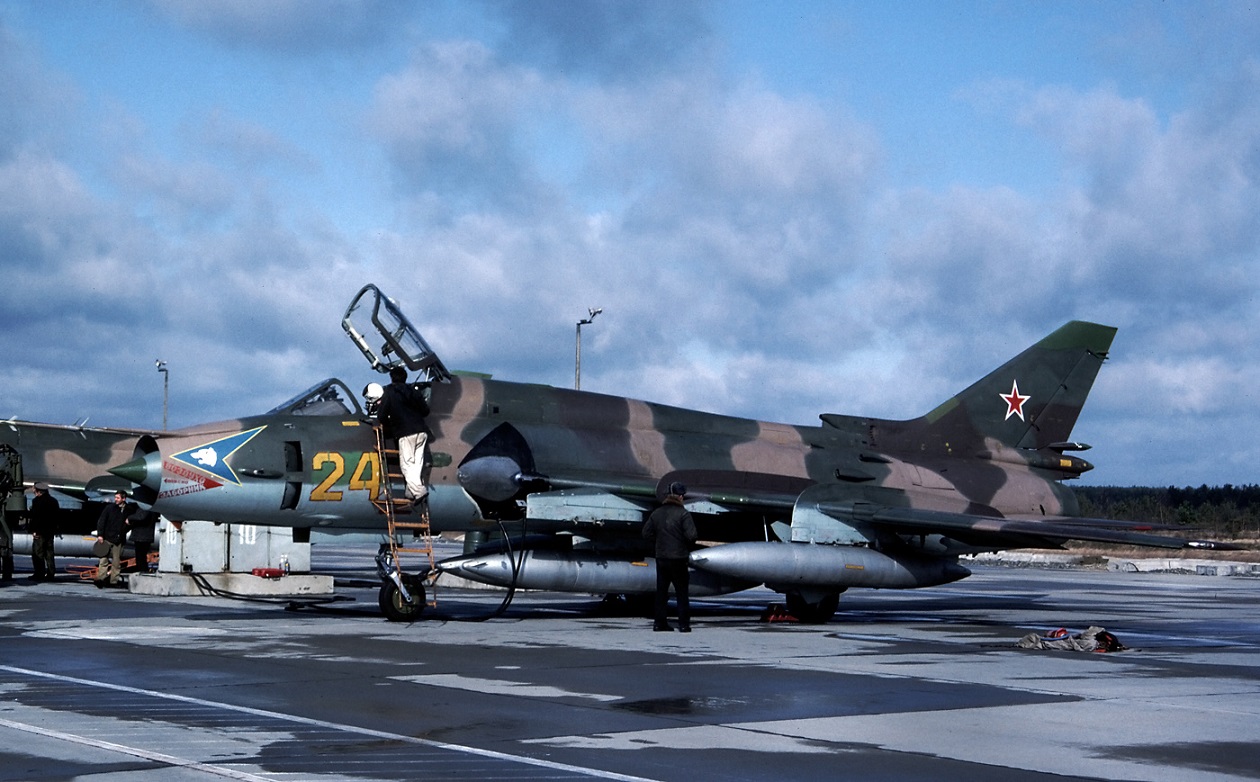
Oh yeah, there’s also a Su-17 on display at the Central Air Force Museum in Monino near Moscow, but given the rather, shall we say, contentious state of relations between Russia and the West right now, if you happen to be a citizen of a NATO nation, playing tourist in Russia probably ain’t such a good idea right now.
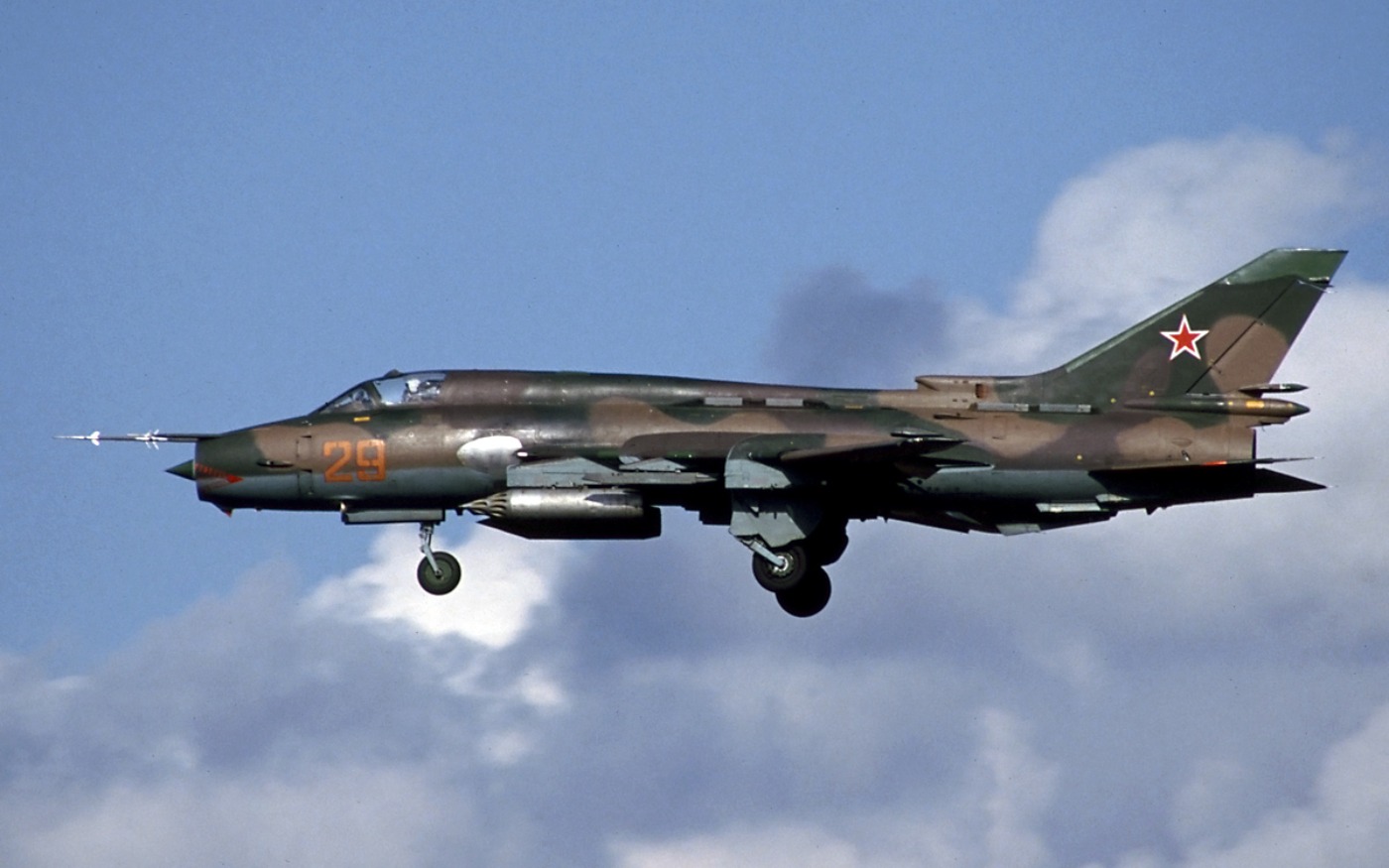
About the Author
Christian D. Orr is a former Air Force Security Forces officer, Federal law enforcement officer, and private military contractor (with assignments worked in Iraq, the United Arab Emirates, Kosovo, Japan, Germany, and the Pentagon). Chris holds a B.A. in International Relations from the University of Southern California (USC) and an M.A. in Intelligence Studies (concentration in Terrorism Studies) from American Military University (AMU). He has also been published in The Daily Torch and The Journal of Intelligence and Cyber Security. Last but not least, he is a Companion of the Order of the Naval Order of the United States (NOUS).
Main image is from Shutterstock. All others are Creative Commons.
